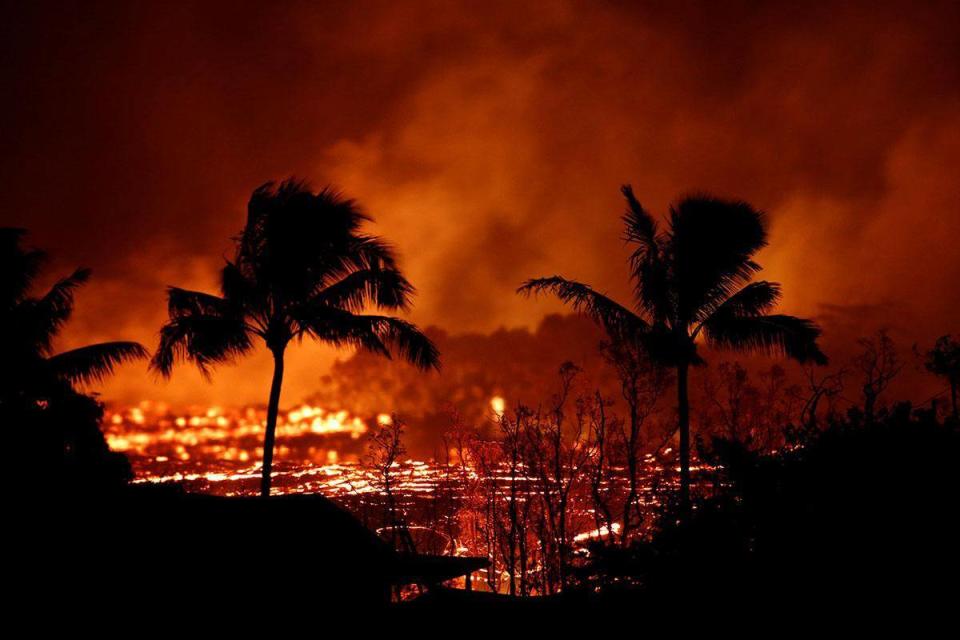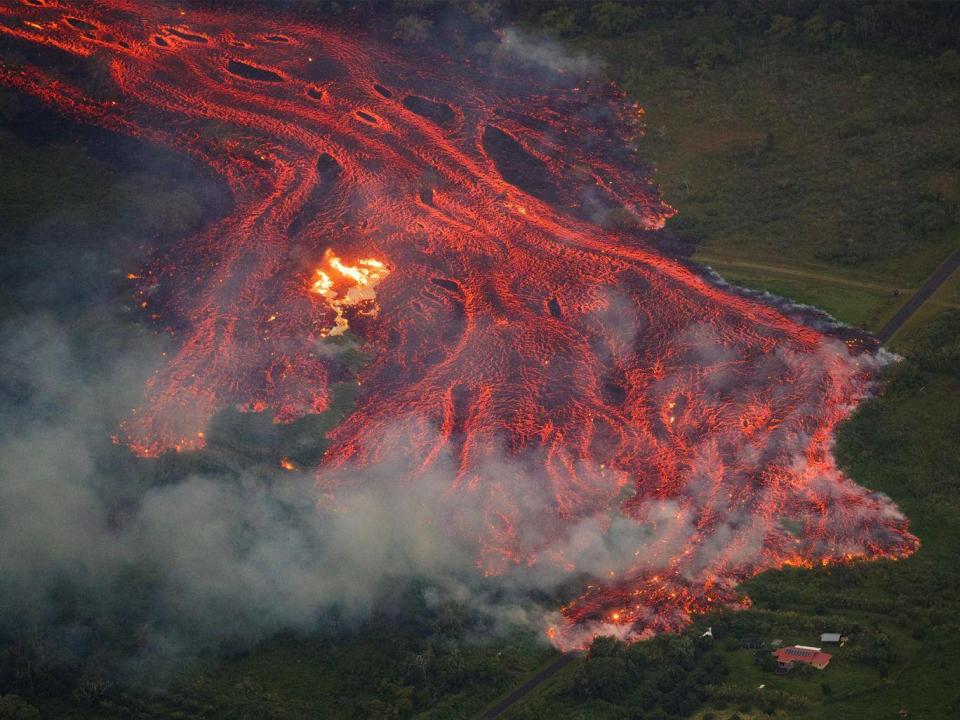Hawaii volcano: Warning over corrosive plumes of 'laze' as toxic cloud emerges from lava flows hitting sea
Hawaii’s volcanic eruption is causing a potentially deadly new hazard as molten rock from Kilauea pours into the ocean.
Authorities warn large clouds given off as the lava boils seawater into steam are likely to contain a dangerous mix of toxic fumes and tiny glass-like particles.
Civil defence notices cautioned motorists, sailors and beach-goers to beware of caustic plumes of so-called “laze”, which formed at two points in the sea on the south coast of Big Island.
They also warned reports of hazardous sulphur dioxide gas being vented from various points around the volcano had tripled, and urged residents to “take action necessary to limit further exposure”.
Laze, a term combining the words “lava” and “haze,” is a mix of hydrochloric acid fumes, steam and fine volcanic glass specks.
It is created when erupting lava, which can reach temperatures exceeding 1,000C, reacts with seawater, the Hawaii County Civil Defence said in a statement.
“Be aware of the laze hazard and stay away from any ocean plume,” the agency said, warning that potential hazards include lung damage, as well as eye and skin irritation.
The US Coast Guard was “actively monitoring” the area to keep away all vessel traffic except permitted tour boats, the civil defence office said.
Laze killed two people when a lava flow reached the coast in 2000, and even a wisp can cause eye and respiratory irritation, the US Geological Survey said.
Acid rain from laze has corrosive properties equivalent to diluted battery acid, the agency added.

The section of coastal Highway 137 and a nearby a state park in the area where lava was pouring into the ocean were both closed, and another road in the vicinity was restricted to local traffic as a precaution due to elevated levels of sulphur dioxide in the air.
An air quality index for Kona, about 40 miles (64km) northwest of the eruption site, was at “orange” level, meaning older people and those with lung problems could be affected.
At the volcano’s summit, two explosive eruptions unleashed clouds of ash. Winds carried much of the ash southwest.
The occurrence of new lava-spewing vents, now numbering at least 22, have been accompanied by flurries of earthquakes and periodic eruptions of ash, volcanic rock and toxic gases from the volcano’s summit crater.

On Saturday, a man was injured when he was struck in the leg by a flying piece of lava as he sat on the third-floor balcony of his home.
“A homeowner who was sitting on a third-floor balcony got hit with lava spatter,” said a spokesperson for the county's mayor. “It hit him on the shin and shattered everything there down on his leg.”
Kilauea has burned around 40 structures, including two dozen homes, since it began erupting on 3 May.
Around 2,000 people have evacuated their homes.
It has also fed a phenomenon called "vog," a hazy mix of sulphur dioxide, aerosols, moisture and dust, with fine particles which can travel deep into the lungs, the USGS said.
Officials at the Hawaii Volcano Authority have warned hotter and more viscous lava could be on the way, with fountains spurting as high as 600ft (182m), as seen in a previous eruption in 1955.
Additional reporting by agencies

 Yahoo News
Yahoo News 
